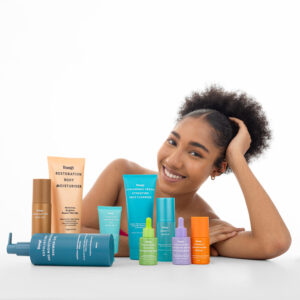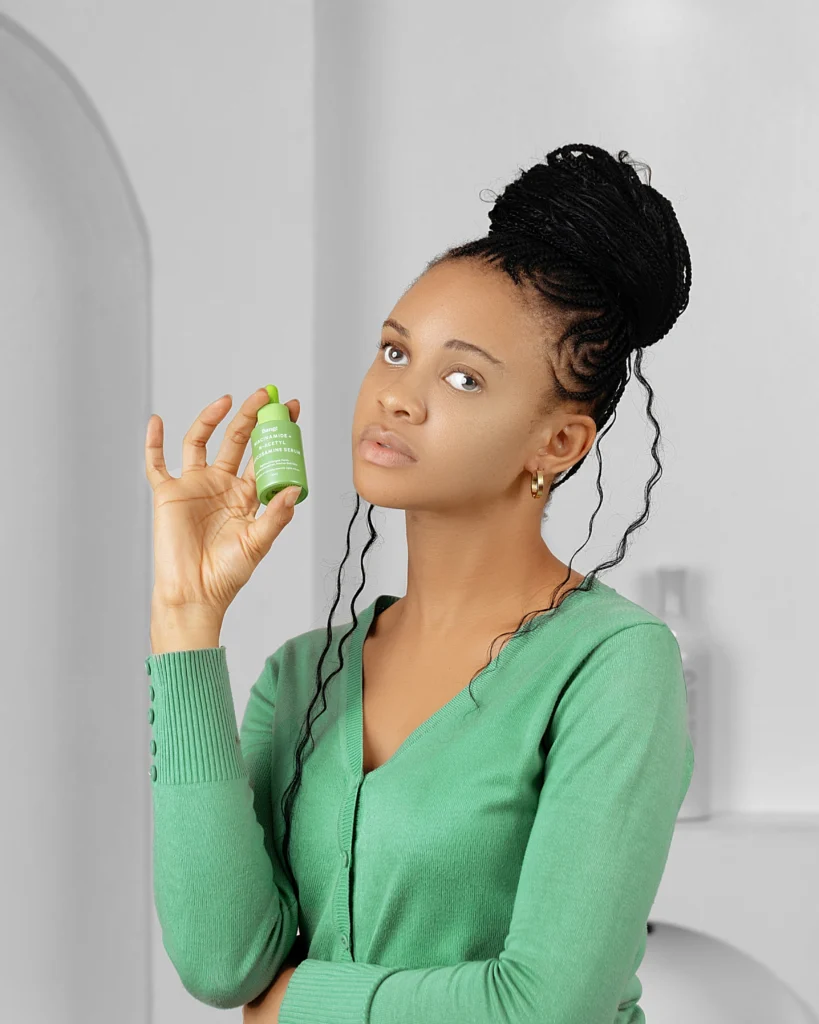
Free Shipping on Orders Over N200,0000 within Lagos
Buy 300k and get 20% off any spa service
Free Shipping For Orders over $150
Free Shipping For Orders over £100

So, you’ve heard a lot about the power of actives, and you’re wondering if you should use retinol or niacinamide?
The thing is, you’re not alone. Both ingredients are powerhouse actives, and they often get compared because they address some of the most common skin concerns: acne, wrinkles, and dark spots.
But here’s the truth: it’s not about which is better than the other. The right choice depends on your skin type, concerns, and how receptive your skin is to stronger actives.
It’s also possible to use both, but with caution. In this article, I’ll help you understand which of the active ingredients is right for you, recommend the best skincare products formulated with these ingredients, and how to use them.
The answer depends on your skin goals.
Retinol is a type of retinoid (a family term for Vitamin derivatives). It is a milder form of retinoid compared to others like retinal, Tretinoin, adapalene, and tazarotene, among others, that are prescription-based.
Dermatologists call retinoids the gold standard for anti-aging. Systematic reviews regard topical tretinoin/retinoic acid as the ‘gold-standard’ treatment for photoaging.
Benefits of Retinol:
Best for:
Caution: Retinol can cause irritation, dryness, or peeling, especially for beginners and melanin-rich skin that’s prone to post-inflammatory hyperpigmentation (PIH).
Expert Tip: I always recommend starting with low-concentration retinol. As your skin becomes more tolerant of this active, you can increase the percentage.
Niacinamide (Vitamin B₃) is the calm, soothing multitasker of skincare. Unlike retinol, it’s very beginner-friendly and works for almost all skin types, including sensitive skin.
Benefits of Niacinamide:
Best for:
Niacinamide is a very gentle yet potent active. Hence, it is perfect for beginners.
Here’s a quick comparison to make it easier:
Bottom line, niacinamide is for beginners and people with sensitive skin. Retinol is an advanced skincare active that should be used based on the recommendation of a skincare expert.
Yes! In fact, they complement each other beautifully when used correctly.
When using prescription-based retinoids like tretinoin, adapalene, and tazarotene, you need to proceed with caution as these are very potent and fast-acting actives.
The risk of irritation is higher.
Thankfully, niacinamide is a gentle and soothing active. It pairs well with most skincare ingredients.
So, it can be used with all forms of retinoid (tretinoin, adapalene, tazarotene, retinol, retinal, isotretinoin, etc.)
Pro Tip: If you have sensitive skin, pair with a lower strength of niacinamide (e.g, 5%). Alternatively, you can use them at different times in your routine, niacinamide in the morning and retinoid at night
See this post: Can I use niacinamide and tretinoin (a type of retinoid) together for a detailed guide on how to pair niacinamide with tretinoin.
How to Introduce Them Into Your Routine
Should you use retinol or niacinamide? The simple answer is that it depends on your skin concerns. To control oil use, niacinamide. To fight wrinkles, use retinol. For a comprehensive solution, use both.
Remember, consistency and sun protection are key. With the best skincare products and routine, you’ll not only treat acne or wrinkles but also build healthier, radiant skin that glows with confidence.
Ready to invest in high-quality skincare that delivers results? Explore Dang Lifestyle’s premium collection of the best skincare products in Nigeria. Your journey to healthy, glowing skin starts here.
Yes, and they work better together. Apply niacinamide first, then retinol at night. Always follow with moisturizer.
Niacinamide is gentler and great for beginners. Retinol helps unclog pores and is effective for persistent acne. Many people benefit from using both.
Retinol is the gold standard for anti-aging. Niacinamide can help improve elasticity, but retinol gives more dramatic results.
Apply niacinamide first, then retinol. Niacinamide preps and protects your skin.
Niacinamide is safer and gentler. Retinol works too, but must be introduced slowly to avoid irritation that can worsen pigmentation.




